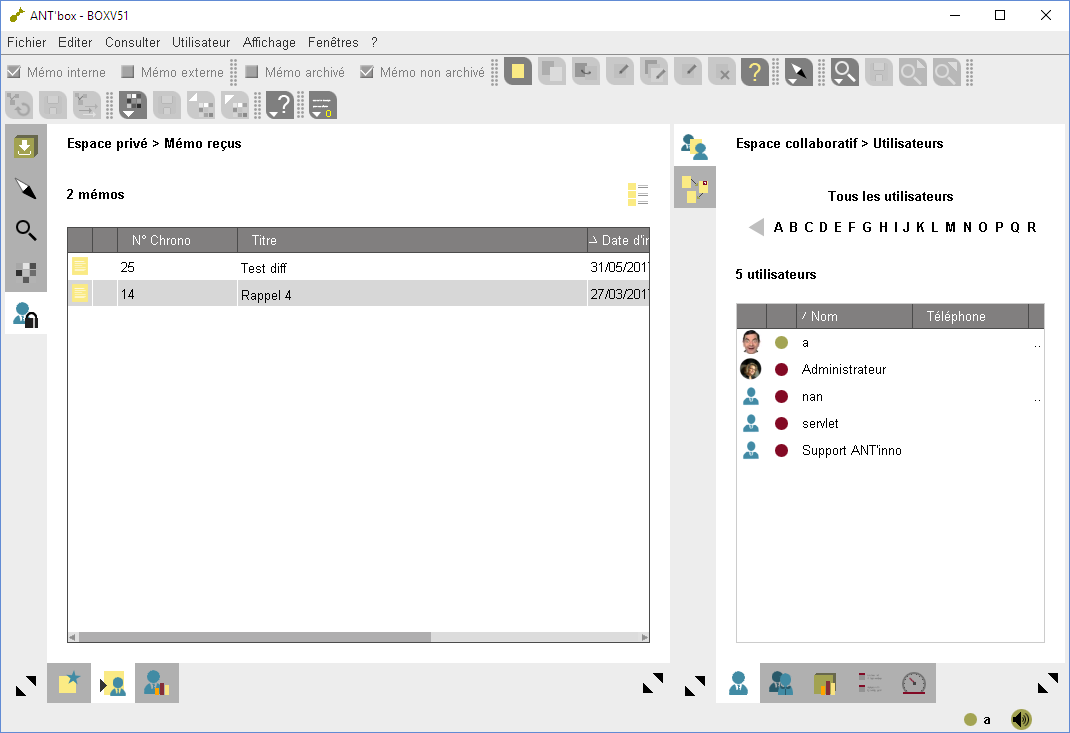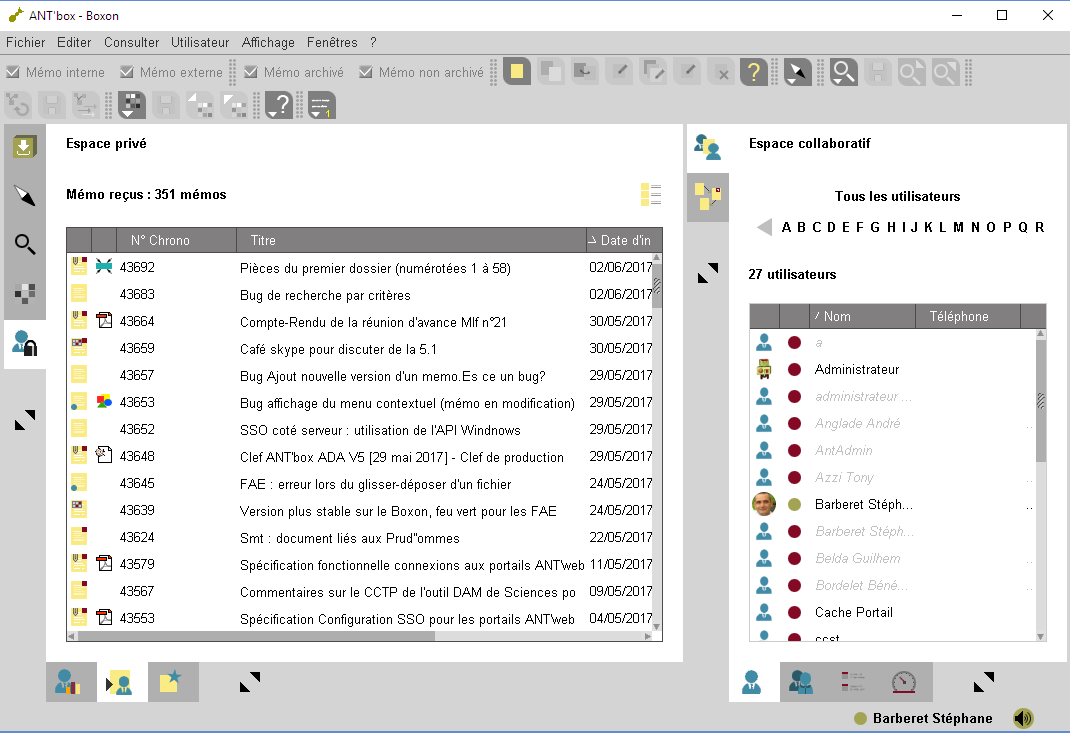I am not certain I did understand your question.
The location of the actions is hard coded in most places, and can not be changed easily. I would really need to know what exactly you want to change where. A screenshot might help.
The order of actions can be switched by playing around with the “DockActionSource” (see the second snippet of code in this answer).
You have an application that works like this?
package test;
import javax.swing.JFrame;
import bibliothek.gui.dock.common.CControl;
import bibliothek.gui.dock.common.CGrid;
import bibliothek.gui.dock.common.CGridArea;
import bibliothek.gui.dock.common.DefaultSingleCDockable;
import bibliothek.gui.dock.common.SingleCDockable;
public class NestedSplitDockStations {
public static void main( String[] args ) {
JFrame frame = new JFrame( "title" );
frame.setDefaultCloseOperation( JFrame.EXIT_ON_CLOSE );
CControl control = new CControl( frame );
frame.add( control.getContentArea() );
CGridArea nested = control.createGridArea( "nested" );
nested.setTitleShown( true );
nested.setTitleText( "Nested" );
CGrid base = new CGrid( control );
base.add( 0, 0, 1, 1, create( "Left" ) );
base.add( 1, 0, 1, 1, nested );
control.getContentArea().deploy( base );
CGrid nestedGrid = new CGrid( control );
nestedGrid.add( 0, 0, 1, 1, create("Top") );
nestedGrid.add( 0, 1, 1, 1, create("Down") );
nested.deploy( nestedGrid );
frame.setBounds( 100, 100, 800, 800 );
frame.setVisible( true );
}
private static SingleCDockable create( String title ) {
DefaultSingleCDockable dockable = new DefaultSingleCDockable( title, title );
return dockable;
}
}
One solution could just be to call …
nested.setMaximizingArea( false );
… because that would ensure that all the “maximize” buttons have the same effect.
Or you might want to replace the default action by a custom action (with new icons, etc). A general solution could look like this:
[code]
package test;
import java.awt.event.ActionEvent;
import java.awt.event.ActionListener;
import java.util.Iterator;
import javax.swing.JFrame;
import bibliothek.gui.DockStation;
import bibliothek.gui.Dockable;
import bibliothek.gui.dock.SplitDockStation;
import bibliothek.gui.dock.action.AbstractDockActionSource;
import bibliothek.gui.dock.action.DefaultActionOffer;
import bibliothek.gui.dock.action.DockAction;
import bibliothek.gui.dock.action.DockActionSource;
import bibliothek.gui.dock.action.LocationHint;
import bibliothek.gui.dock.common.CControl;
import bibliothek.gui.dock.common.CGrid;
import bibliothek.gui.dock.common.CGridArea;
import bibliothek.gui.dock.common.DefaultSingleCDockable;
import bibliothek.gui.dock.common.SingleCDockable;
import bibliothek.gui.dock.common.action.CButton;
import bibliothek.gui.dock.common.action.core.CommonSimpleButtonAction;
import bibliothek.gui.dock.common.action.predefined.CMaximizeAction;
import bibliothek.gui.dock.common.intern.CDockable;
import bibliothek.gui.dock.common.intern.CommonDockable;
import bibliothek.gui.dock.common.mode.ExtendedMode;
import bibliothek.gui.dock.event.DockActionSourceListener;
public class NestedSplitDockStations {
public static void main( String[] args ) {
JFrame frame = new JFrame( “title” );
frame.setDefaultCloseOperation( JFrame.EXIT_ON_CLOSE );
CControl control = new CControl( frame );
// adding an "ActionOffer" lets us take control over the way actions are generated
control.getController().addActionOffer( new CustomActionOffer( control ) );
frame.add( control.getContentArea() );
CGridArea nested = control.createGridArea( "nested" );
nested.setTitleShown( true );
CGrid base = new CGrid( control );
base.add( 0, 0, 1, 1, create( "Left" ) );
base.add( 1, 0, 1, 1, nested );
control.getContentArea().deploy( base );
CGrid nestedGrid = new CGrid( control );
nestedGrid.add( 0, 0, 1, 1, create( "Top" ) );
nestedGrid.add( 0, 1, 1, 1, create( "Down" ) );
nested.deploy( nestedGrid );
frame.setBounds( 100, 100, 800, 800 );
frame.setVisible( true );
}
private static SingleCDockable create( String title ) {
DefaultSingleCDockable dockable = new DefaultSingleCDockable( title, title );
return dockable;
}
private static class CustomActionOffer extends DefaultActionOffer {
private CControl control;
public CustomActionOffer( CControl control ) {
this.control = control;
}
@Override
public boolean interested( Dockable dockable ) {
// we are only interested in the dockables that are child of two SplitDockStations
return isNested( dockable ) && dockable instanceof CommonDockable;
}
@Override
public DockActionSource getSource( Dockable dockable, DockActionSource source, DockActionSource[] guards, DockActionSource parent, DockActionSource[] parents ) {
// just get the actions like we would normally...
DockActionSource base = super.getSource( dockable, source, guards, parent, parents );
CDockable cdockable = ((CommonDockable) dockable).getDockable();
// ... but then replace the "maximize" button with our custom button
return new ReplacingDockActionSource( cdockable, base, control );
}
}
private static class ReplacingDockActionSource extends AbstractDockActionSource implements DockActionSourceListener {
private DockActionSource base;
private CButton replacedAction;
public ReplacingDockActionSource( CDockable dockable, DockActionSource base, CControl control ) {
this.base = base;
// our replacement button for the "maximize" action
replacedAction = new CButton( "Replaced", null );
replacedAction.setShowTextOnButtons( true );
replacedAction.addActionListener( new ActionListener() {
@Override
public void actionPerformed( ActionEvent e ) {
dockable.setExtendedMode( ExtendedMode.MAXIMIZED );
}
} );
}
@Override
public void addDockActionSourceListener( DockActionSourceListener listener ) {
if( !hasListeners() ) {
base.addDockActionSourceListener( this );
}
super.addDockActionSourceListener( listener );
}
@Override
public void removeDockActionSourceListener( DockActionSourceListener listener ) {
super.removeDockActionSourceListener( listener );
if( !hasListeners() ) {
base.removeDockActionSourceListener( this );
}
}
@Override
public void actionsAdded( DockActionSource source, int firstIndex, int lastIndex ) {
fireAdded( firstIndex, lastIndex );
}
@Override
public void actionsRemoved( DockActionSource source, int firstIndex, int lastIndex ) {
fireRemoved( firstIndex, lastIndex );
}
@Override
public LocationHint getLocationHint() {
return base.getLocationHint();
}
@Override
public int getDockActionCount() {
return base.getDockActionCount();
}
@Override
public DockAction getDockAction( int index ) {
DockAction action = base.getDockAction( index );
if( action instanceof CommonSimpleButtonAction ) {
if( ((CommonSimpleButtonAction) action).getAction() instanceof CMaximizeAction ) {
action = replacedAction.intern();
}
}
return action;
}
@Override
public Iterator<DockAction> iterator() {
return new Iterator<DockAction>() {
private int index = 0;
@Override
public DockAction next() {
return getDockAction( index++ );
}
@Override
public boolean hasNext() {
return index < getDockActionCount();
}
};
}
}
private static boolean isNested( Dockable dockable ) {
DockStation parent = dockable.getDockParent();
int count = 0;
while( parent != null ) {
if( parent instanceof SplitDockStation ) {
count++;
}
dockable = parent.asDockable();
if( dockable == null ) {
parent = null;
} else {
parent = dockable.getDockParent();
}
}
return count > 1;
}
}[/code]
Or to replace just the action of one Dockable:
dockable.putAction( CDockable.ACTION_KEY_MAXIMIZE, action );

